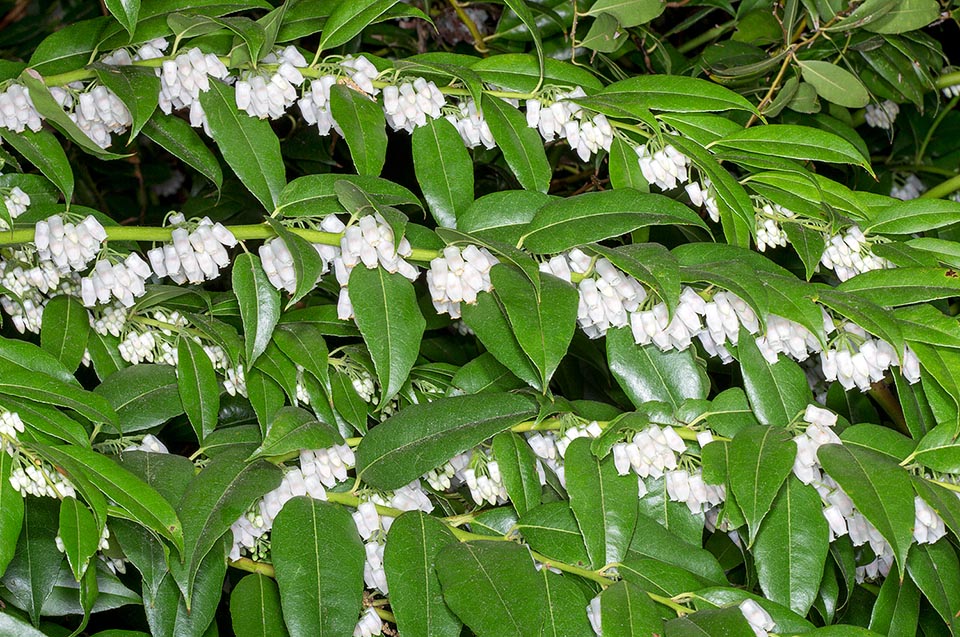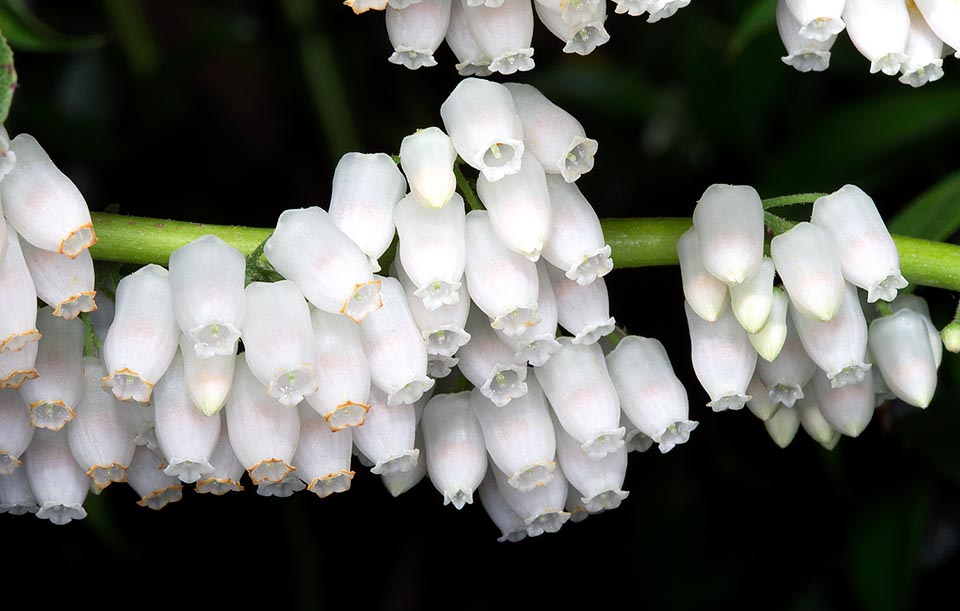Family : Ericaceae

Text © Pietro Puccio

English translation by Mario Beltramini
The species is native to USA (Georgia, northern Florida and South Carolina) where it lives in the underwood of the forests of latifoliate, often at the edges of swamps, along the water streams and close to water sources, up to 50 m of altitude.
The name of the genus refers to Agariste, female character of the Greek mythology; the name of the species is the combination of the Latin substantives “populus, i” = poplar and of the Latin substantive “folium, ii” = leaf, with obvious reference.
Common names: Florida leucothoe, pipestem wood, tall fetterbush (English).
The Agarista populifolia (Lam.) Judd (1979) is a dense evergreen shrub, up to about 4 m tall, with long branches, hollow between the nodes, ascending and slightly arcuate.

The Agarista populifolia is a dense evergreen shrub native to South Carolina, Georgia and northern Florida. Of easy cultivation, resists well the cold, up to -18 °C, reaching the height of 4 m with long ascending branches, slightly arcuate. Luxuriant ovate-lanceolate leaves. The emerging ones have a bright reddish brown color © Giuseppe Mazza
The leaves, on an up to 1 cm long petiole, are alternate, simple, ovate-lanceolate with acute or acuminate apex and usually entire margin, at times more or less serrate, coriaceous, of intense glossy green color, glabrous or pubescent along the midrib below, 3-10 cm long and 1-4 cm broad; the emerging leaves have a bright bronze reddish color.
Axillar inflorescences, on short peduncle, racemose, slightly pubescent, with 10-20 flowers, on an about 1 cm long pedicel, hermaphrodite, of white or white cream color, fragrant, with 5 sepals, about 2 mm long, united at the base per about half of their length, with triangular apex, urceolate corolla, 6-9 mm long and of 3-5 mm of diameter, with five short and curved lobes, and 10 stamens not exceeding the corolla. The fruits are dehiscent globose-depressed capsules, 3-4 mm long and of 4,5-6 mm of diameter, containing seeds, of about 2 mm of diameter, of brown color.
It reproduces by seed, that does not have a long duration of germinability, semi-woody cutting in summer-autumn and by air layering.

Perfumed small flowers, 6-9 mm long, in spring-early summer. All parts of the plant are venomous; if ingested, because of the presence of grayanatoxins © Giuseppe Mazza
Ornamental shrub of fast growth and of easy cultivation with luxuriant foliage and decorative blooming in late spring–early summer, ideal for borders and fences, informal as well as shaped, as bearing well the prunings. It prefers shady or humid semi-shady locations, it bears well also the full sun, but only if frequently and abundantly irrigated, and needs well drained soils, acidic to neutral, rich of organic substance. Is remarkable its resistance to the low temperatures, bearing without damage values up to about -18 °C, and good that to parasites and diseases.
All parts of the plant are venomous if ingested due to the presence of grayanatoxins, like as in other species of Ericaceae, that cause hypotension, bradycardia and in the most serious forms, convulsions, paresthesiae, loss of consciousness, arrhythmia and atrioventricular block.
Synonyms : Andromeda populifolia Lam. (1783); Lyonia populifolia (Lam.) K. Koch (1872); Leucothoe populifolia (Lam.) Dippel (1889).
→ To appreciate the biodiversity within the ERICACEAE family please click here.
